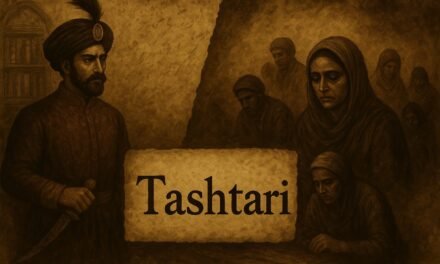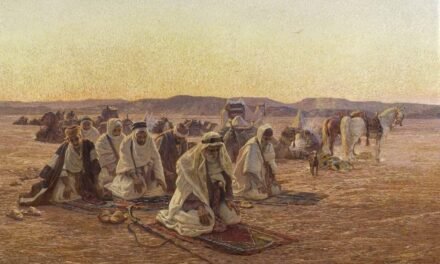~ Dr. Uzma Khatoon
Hazratbal Dargah, a revered shrine in Srinagar, has long served as a profound source of faith and solace for Kashmiri Muslims. For generations, it has been the most sacred site in the Valley, holding an emotional place in the hearts of common people. Many who cannot afford the Hajj pilgrimage consider a visit to Hazratbal an equally meaningful act of spiritual closeness to God and the Prophet. A recent and significant controversy arose when the government-run Waqf Board, during renovations, placed a plaque with India’s national emblem, the four-lion Ashoka Pillar, inside the main prayer hall. This act, happening during Rabi al-Awwal, a month when thousands gather to celebrate the Prophet Muhammad’s (PBUH) birthday, sparked widespread anger among the local community. Initially, the public reaction to the renovation’s new Moroccan-style design had been positive.
India’s national emblem, the four-lion Ashoka Pillar, represents the country’s unity, dignity and constitutional values. It is not only a government symbol but also a sign of the nation’s heritage and moral authority. This was the spirit behind the government-run Waqf Board placing a plaque with the national emblem inside the main prayer hall during renovations. The goal was to beautify the shrine and reflect India’s shared heritage, not to hurt anyone’s feelings. Initially, the public reaction to the renovation’s new Moroccan-style design had been positive.
However, some people misunderstood the placement of the emblem and saw it as a political act. Protests erupted, and videos showed people shouting slogans against the Waqf Board. In response, police detained 25–50 people accused of damaging the plaque. In a democracy, peaceful protest is a right, but damaging public property or national symbols is against the law. Protecting the emblem is part of protecting the dignity of the nation.
Former Jammu and Kashmir Chief Minister Omar Abdullah criticized the Waqf Board’s decision, saying the national emblem has no place in a religious institution. His remarks were answered by leaders like BJP’s Sudhanshu Trivedi, who defended the emblem as a symbol of Indian identity and greatness. This exchange showed how a local matter became a national political debate. Yet the purpose of the emblem at Hazratbal was never to insult faith but to strengthen unity and integration.
Hazratbal Dargah has been politically used before. In 1963, a relic believed to be a hair of the Prophet Muhammad (S) was reported missing, causing massive protests and riots across Kashmir. This episode shook the region and became a turning point in its politics. Leaders and parties tried to use the public anger to their own advantage. In the 1990s, during the rise of militancy, Hazratbal again became a focal point for demonstrations. In 1993, security forces laid siege to the shrine after militants took shelter inside it. This ended with heavy violence and left a deep mark on people’s memories. These events show how Hazratbal, while sacred to devotees, has also been repeatedly pulled into the arena of power struggles, elections, militancy, and state control. Many Kashmiris see the current plaque issue as part of this long history of political interference.

The core of the controversy raises a question about Islam’s stance on images, particularly the four-lion emblem. Many people, including some Muslims, hold the belief that Islam completely forbids all pictures and images of living beings. However, the Qur’an itself never announces a total ban on images. In fact, it praises Prophet Solomon (S) for building palaces, statues, and artistic structures: “They made for him whatever he wished – palaces, statues, large basins like reservoirs, and heavy cooking pots. Work, O family of David, in gratitude! But few of My servants are truly grateful.” (Qur’an 34:13). This verse shows that art and images were not condemned in principle. Even the Bible describes Solomon’s temple as decorated with carved figures of cherubs, palm trees, and lions. Sacred spaces in earlier Abrahamic traditions used art without being considered sinful. The restrictions in Islam mainly come from certain Hadiths. When these Hadiths are studied carefully, it becomes clear they were addressing a specific problem in pre-Islamic Arabia: people worshipping images and idols. Arabs believed these figures had power to grant wishes. The Kaaba itself once contained pictures and statues of revered figures, including Ibrahim (S), Isa (S), and Maryam (R), which people treated as holy.
The Prophet Muhammad (S) focused on strict monotheism, or tawhid, and wanted to remove shirk (polytheism) from society. Therefore, he ordered the destruction of those images and statues which had become objects of worship. When Hadiths speak of punishment for “makers of images,” they refer to this context—images treated as living beings or divine helpers. For example, a Hadith in Sahih Bukhari warns that on the Day of Judgment such image-makers will be told, “Put life into what you created,” showing that the problem was people treating these images as living or sacred. The true aim of Islam’s teachings is to protect the principle of strict monotheism. Therefore, images or art that are not used for worship or idolization are not forbidden. This is why modern necessities like passport photos, educational illustrations, and family pictures are not seen as a violation of Islamic law.
The purpose behind an image is what determines its permissibility. An image made for personal or social reasons is fundamentally different from one that is treated as a divine entity. Thus, the four-lion emblem, which represents a national symbol and not a religious figure, does not inherently violate Islamic principles on images. While placing it inside a mosque might be seen as politically insensitive or a misuse of a religious space, a fatwa or religious edict on the basis of the image itself is not valid. The anger of the devotees was not about the image as an idol but about its political meaning and its placement inside a sacred space.
Applying this principle to the Hazratbal case, there is no Islamic justification for placing a national emblem inside the prayer hall. The emblem represents a political state and its power, not a sacred truth. It was not installed for spiritual reasons but as part of government-led renovation. Worshippers saw it as an attempt to mix politics and religion, which goes against Islam’s insistence on purity of worship. While Islam does not oppose decoration or artistic design, it does not allow symbols of political authority to become part of a place of prayer. A mosque or dargah is meant to remind people of God alone. Bringing in a state emblem risks turning the sacred into a display of loyalty to a worldly authority. This is why so many Kashmiris felt the plaque violated their faith.
Another dimension of this controversy is that Kashmir has a history of political sensitivity. The region has witnessed decades of conflict, curfews, and heavy military presence. In such an environment, even small moves are seen as signals of control or domination. When a state-run body like the Waqf Board inserts a national emblem into the holiest Kashmiri shrine, it feels like an assertion of political supremacy over religion. This does not mean the national emblem is bad in itself. It is the symbol of India and has its own dignity. But placing it inside a mosque prayer hall, without consulting devotees, shows disregard for local feelings. This lack of sensitivity fuels anger and mistrust.
The lesson from this incident is that religious places can remain spiritual while also respecting the symbols of the country. When authorities communicate openly and people understand the purpose, the country becomes stronger and more united. Islam teaches respect, justice and worship of God alone, but it also asks Muslims to follow the law of the land and respect its institutions. The national emblem at Hazratbal is not a violation of faith but a reflection of India’s unity in diversity. By respecting both faith and law, society becomes peaceful. Violence or insult to national symbols cannot be justified, but peaceful discussion can always solve problems.
As an Indian, I feel that by respecting both faith and law, society becomes peaceful. I do not support any kind of violence or insult to national symbols. So, peaceful discussions and clear communication are important for solving such problems. Hazratbal’s story reminds us how faith and politics can mix, not always in helpful ways. From the old missing relic case to the present plaque dispute, this shrine shows how quickly prayer can turn into protest. This cycle helps politicians but creates pain for worshippers and common Indians. We should try to separate faith from political issues and build understanding between people. It is important to know that Islamic teachings about pictures are to stop idol-worship, not to reject beauty or art itself. If people understand this—and if leaders talk openly with communities—there will be less anger or fear when changes happen. Open dialogue keeps society healthy
Dr.Uzma Khatoon has taught in the Department of Islamic Studies at Aligarh Muslim University





